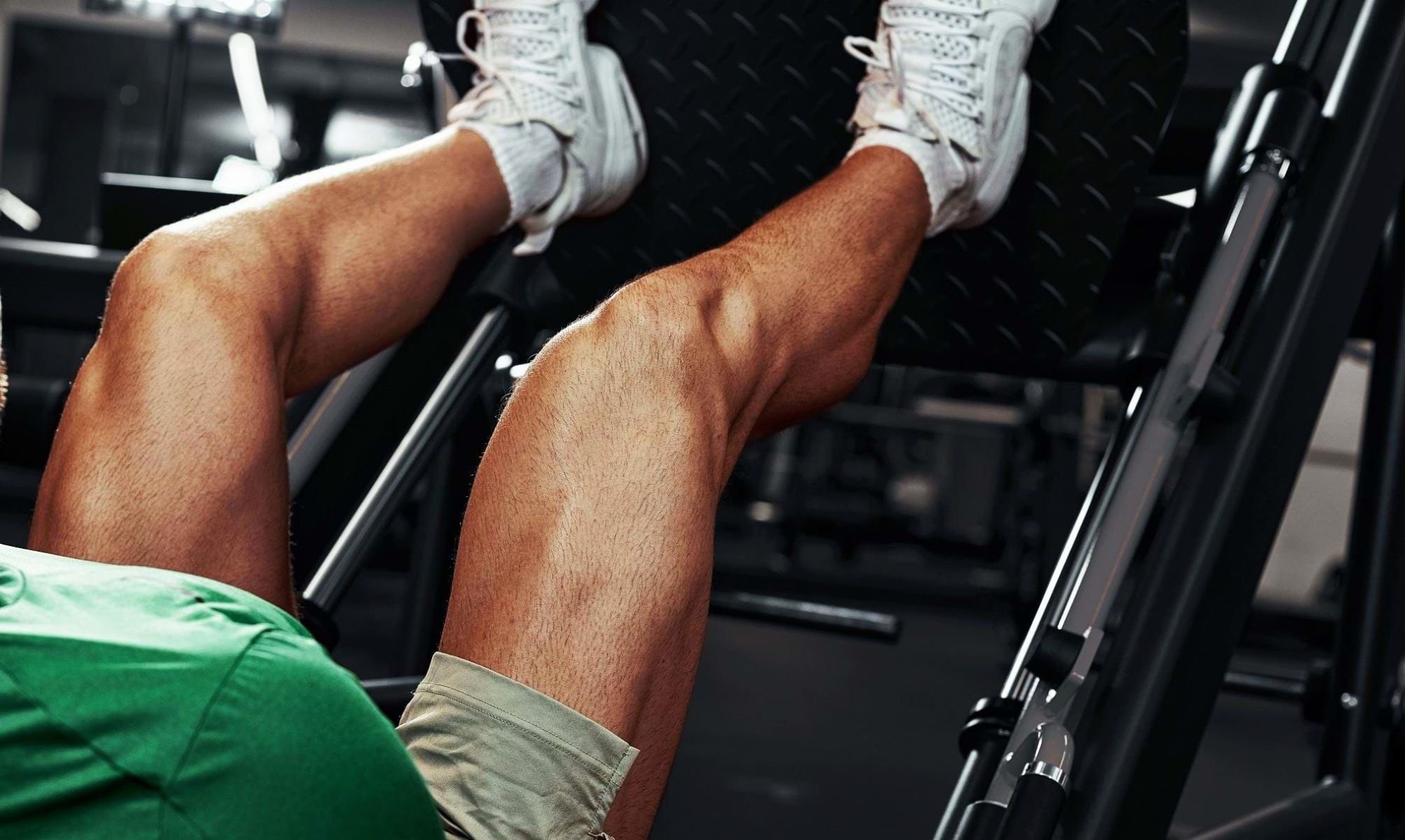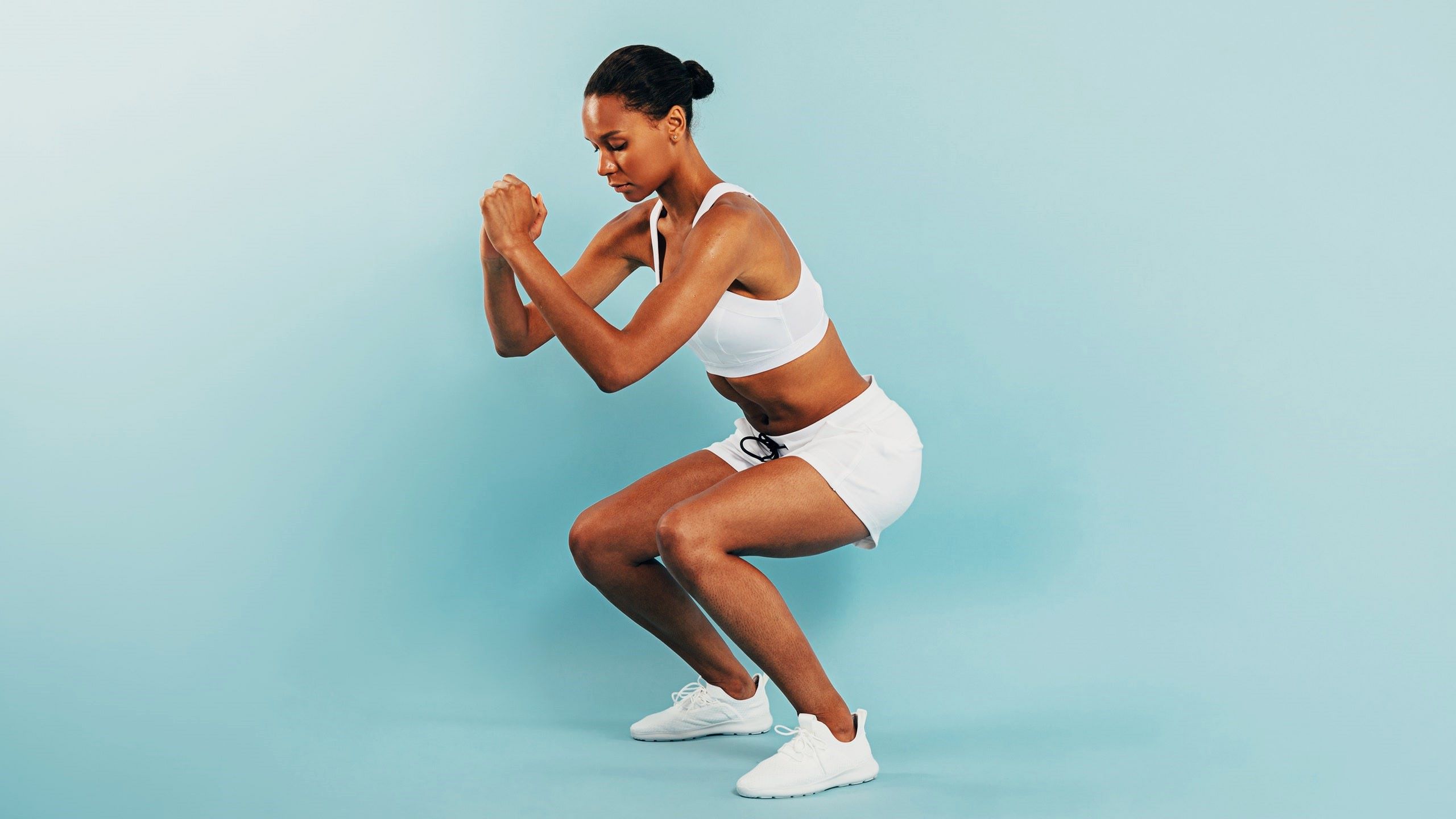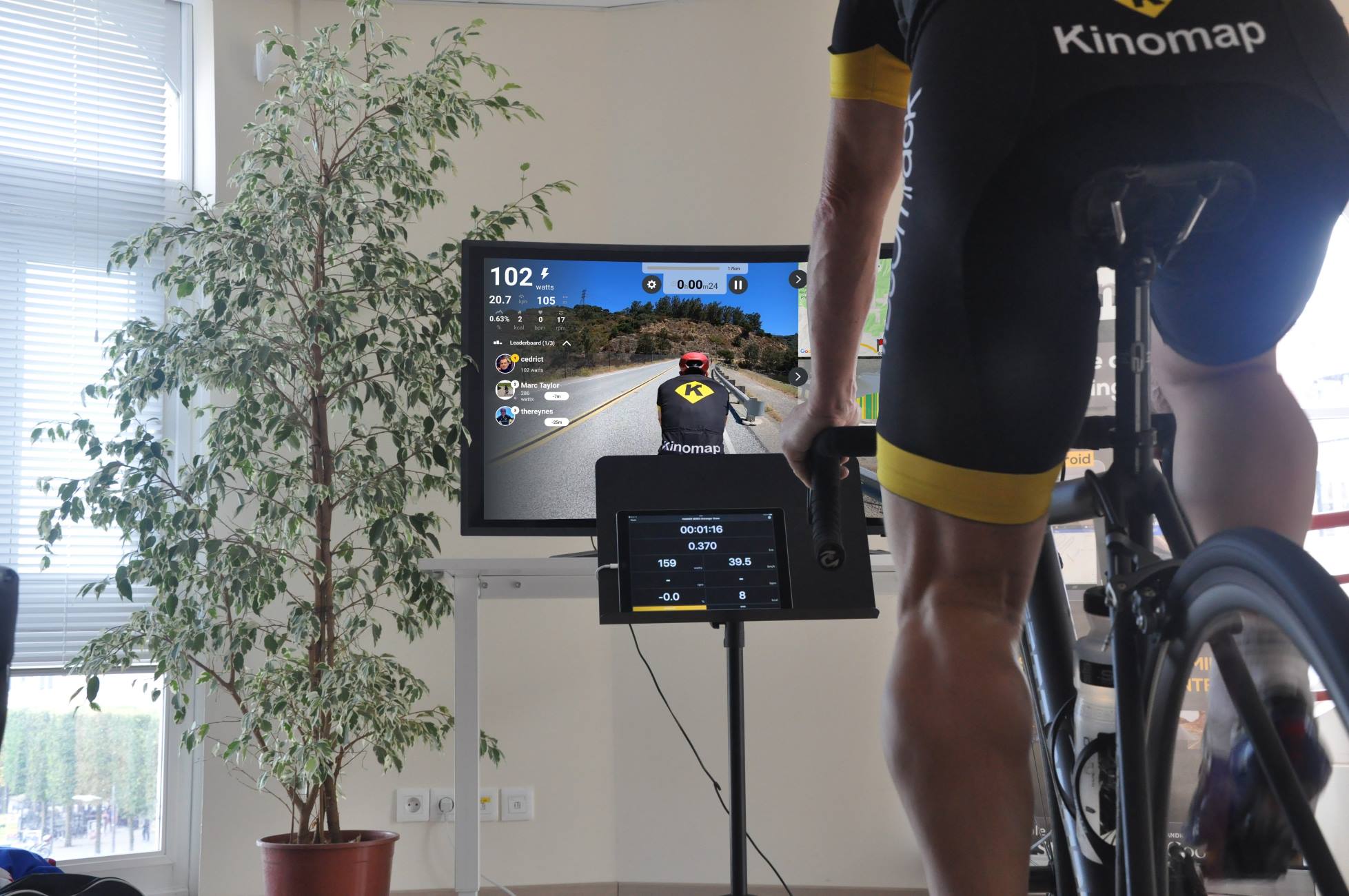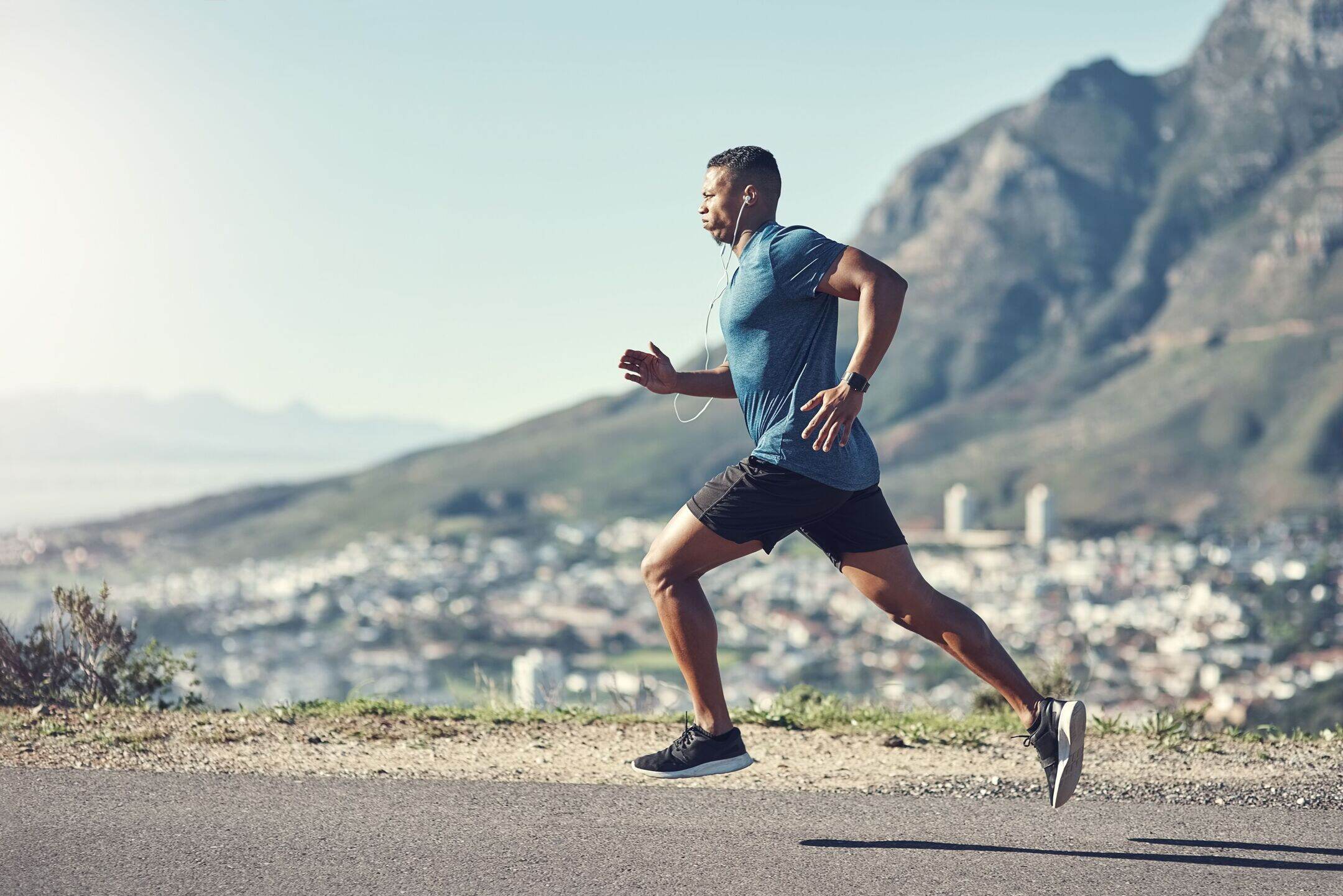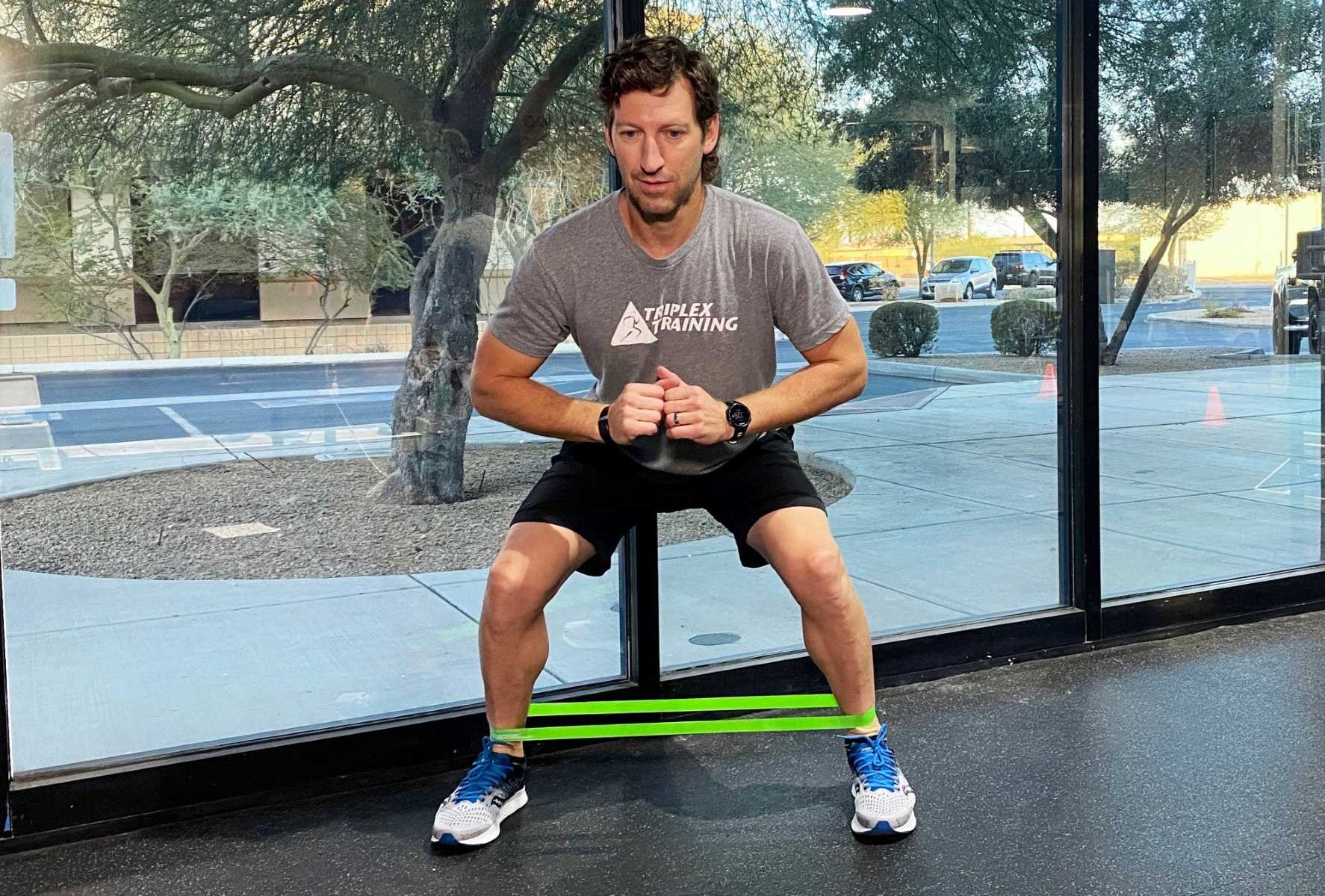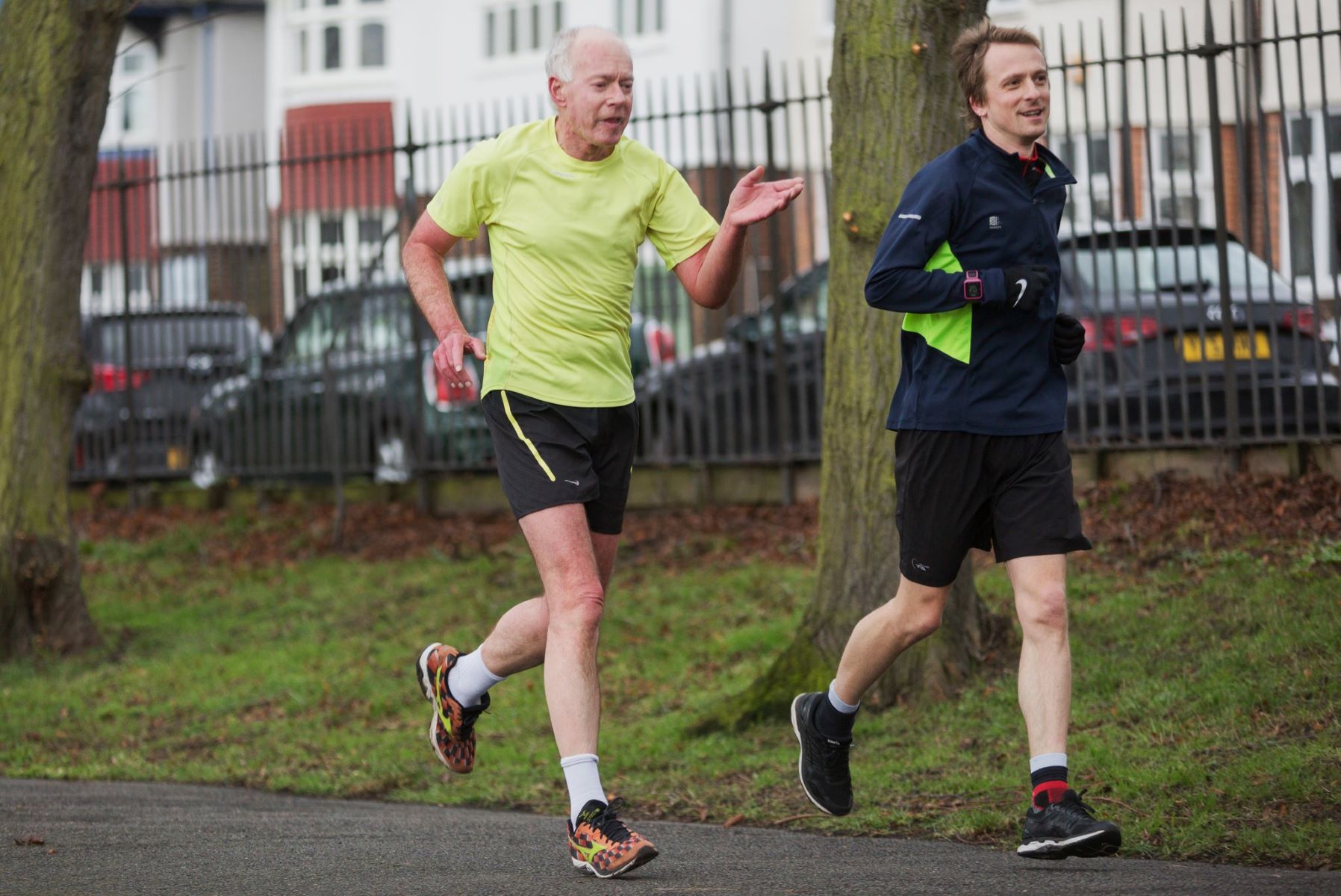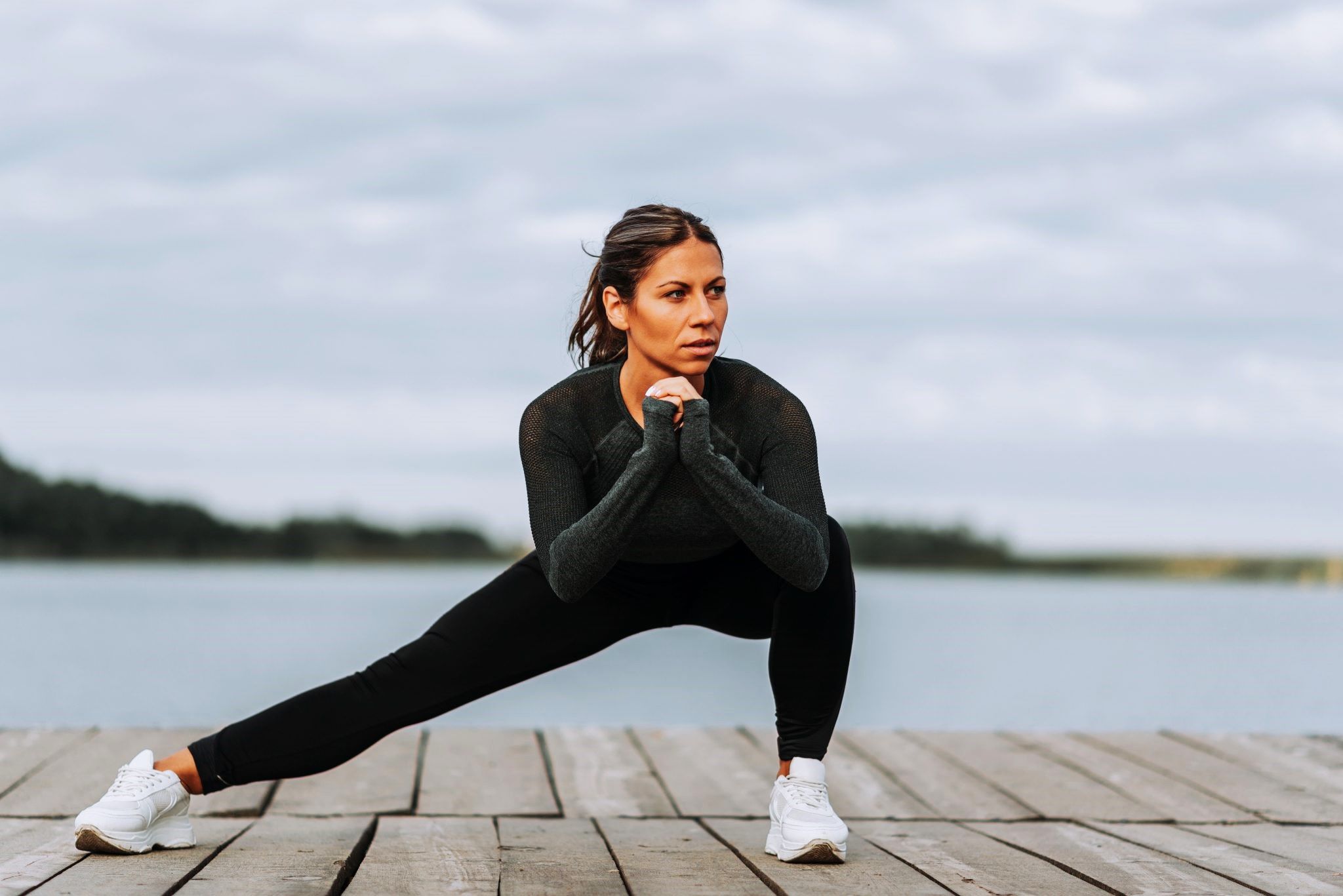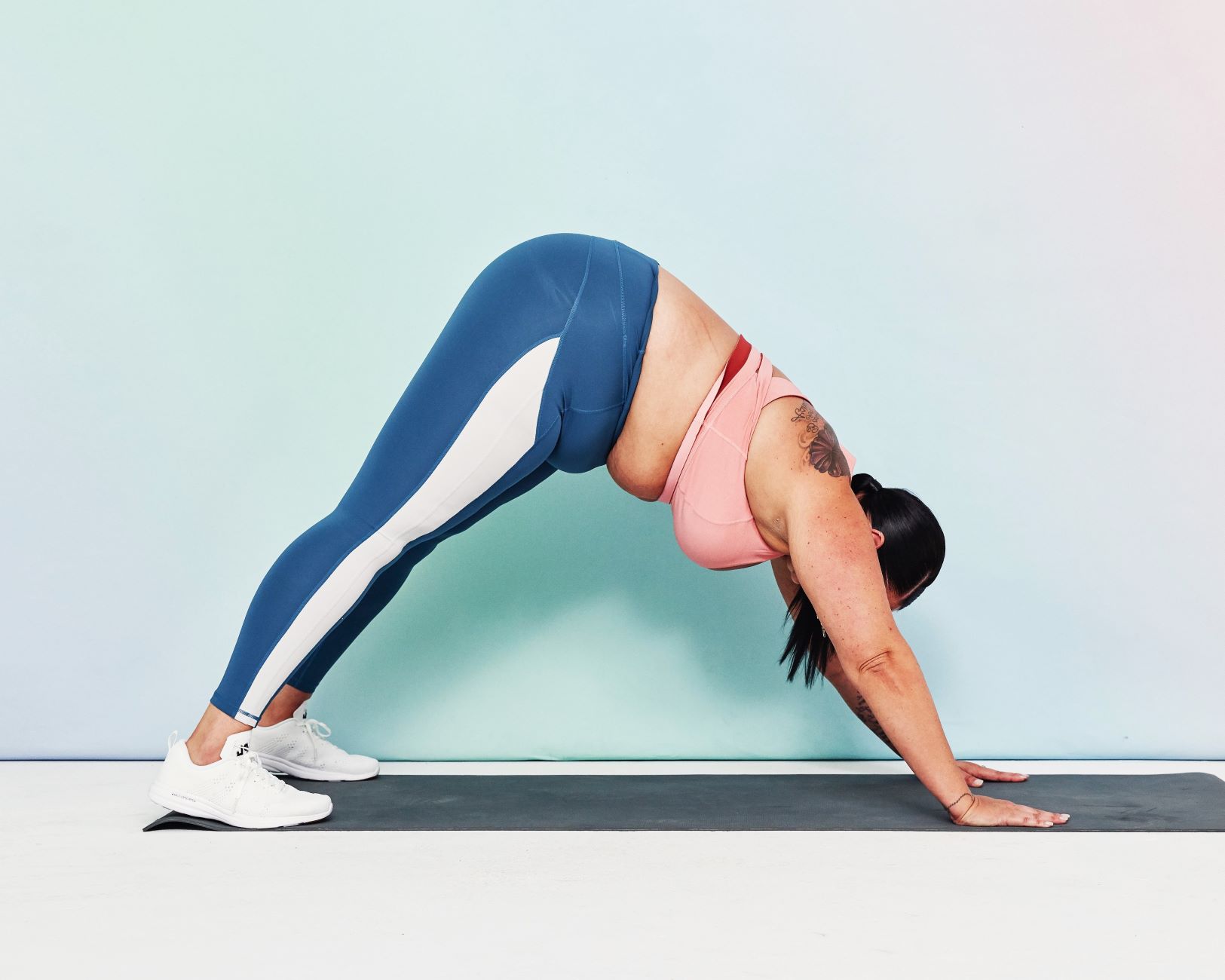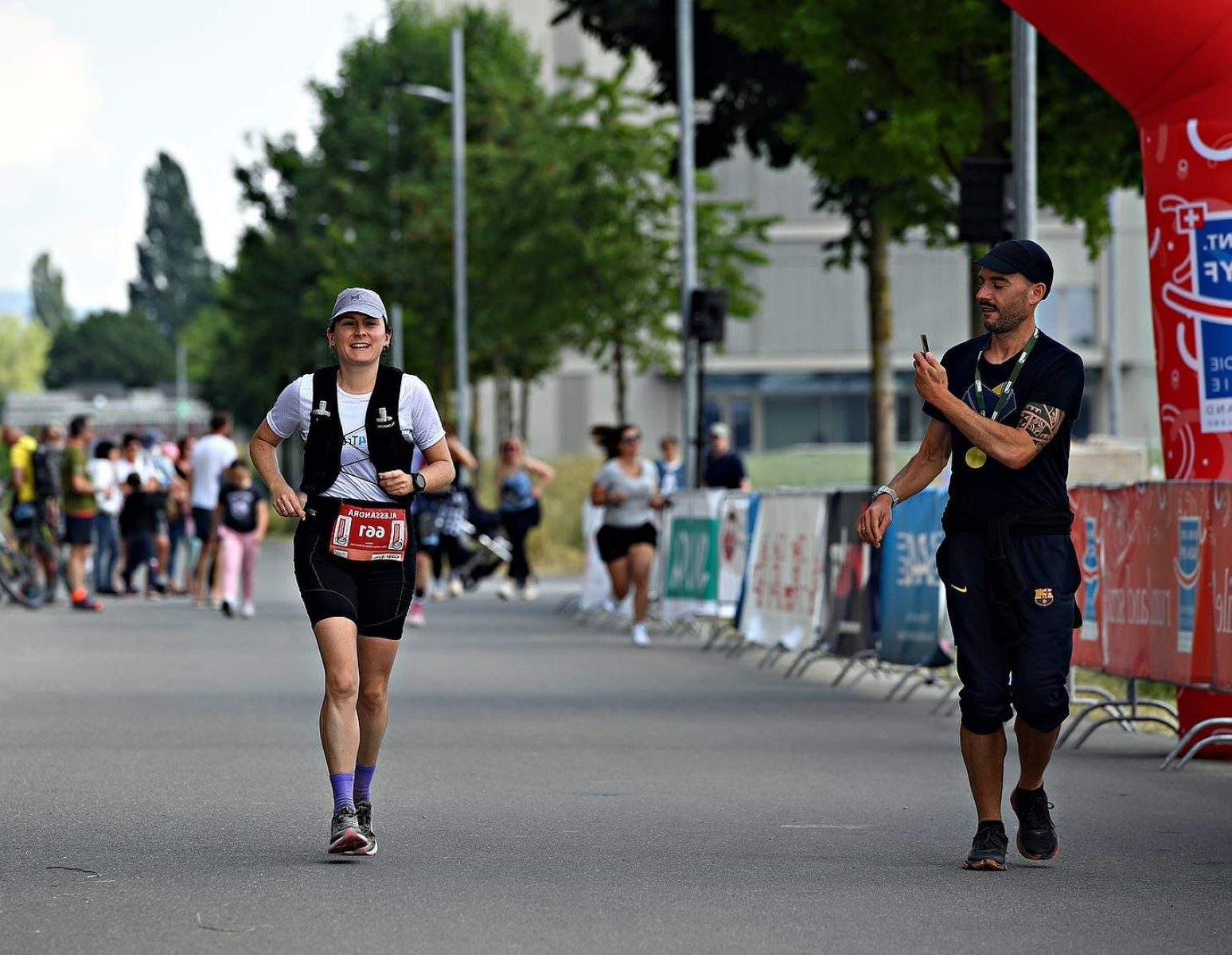Home>Health & Nutrition>Injury Prevention>Exercises To Improve Hip Mobility For Runners
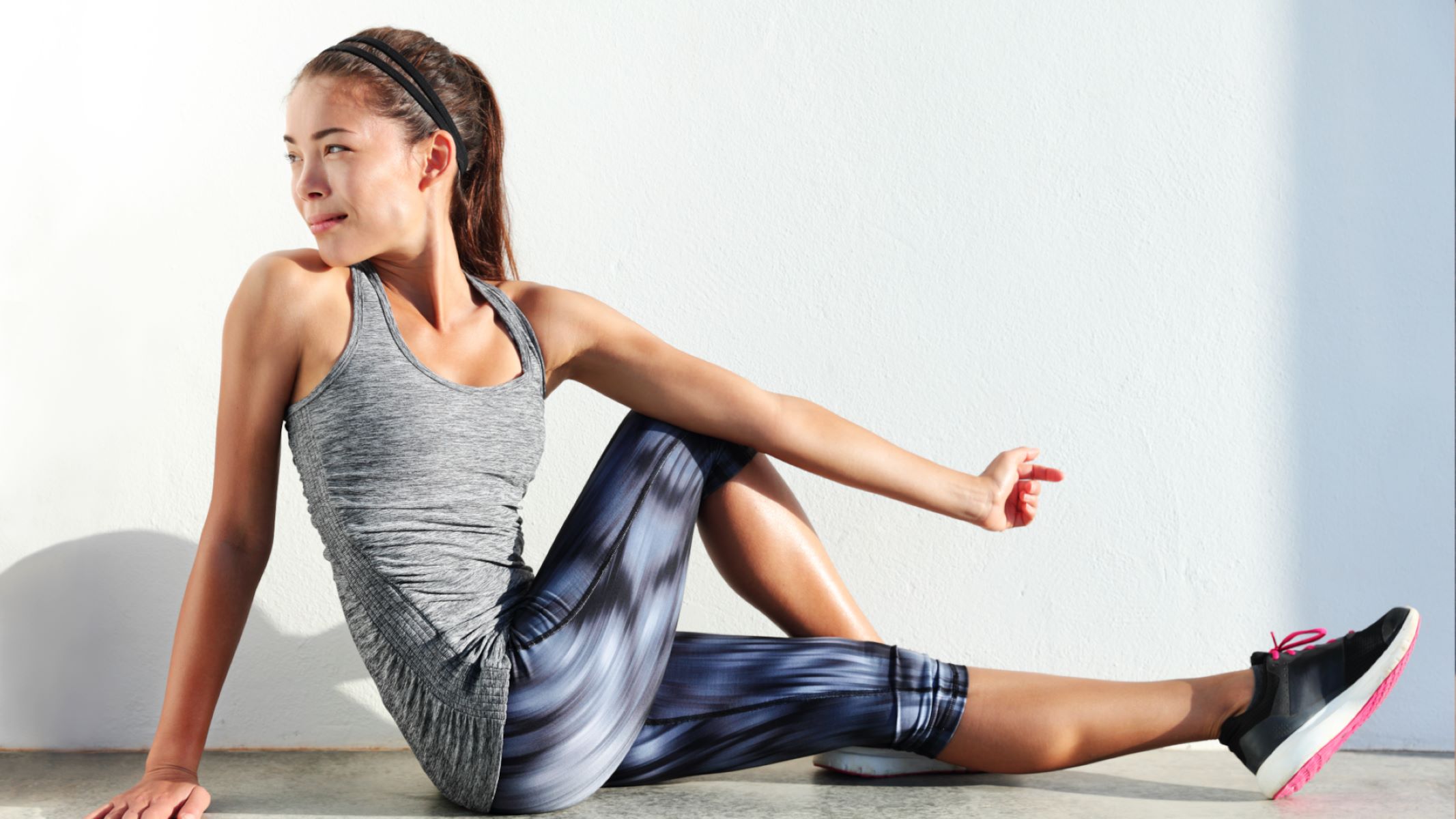

Injury Prevention
Exercises To Improve Hip Mobility For Runners
Published: February 26, 2024
Improve hip mobility with these effective exercises for runners to prevent injuries and enhance performance. Incorporate these movements into your routine for better injury prevention.
(Many of the links in this article redirect to a specific reviewed product. Your purchase of these products through affiliate links helps to generate commission for Therunningadvisor.com, at no extra cost. Learn more)
Table of Contents
- Importance of Hip Mobility for Runners
- Common Hip Mobility Issues in Runners
- Dynamic Warm-Up Exercises for Hip Mobility
- Static Stretches for Improved Hip Flexibility
- Strength Training Exercises for Hip Stability
- Mobility Drills for Increased Range of Motion
- Incorporating Hip Mobility Work into Your Running Routine
Importance of Hip Mobility for Runners
Hip mobility plays a pivotal role in the overall performance and injury prevention for runners. The hips are a crucial component of the body's kinetic chain, serving as the bridge between the lower and upper body. Optimal hip mobility allows for a smooth and efficient running gait, enabling the legs to move through a full range of motion with each stride.
When the hips lack mobility, the body compensates by placing additional stress on other areas, such as the knees and lower back. This compensation can lead to imbalances and overuse injuries, hindering a runner's progress and causing discomfort during and after runs.
Furthermore, restricted hip mobility can impede proper running form, leading to decreased power generation and reduced stride length. This can ultimately impact speed and endurance, limiting a runner's ability to reach their full potential.
By prioritizing hip mobility, runners can enhance their performance and reduce the risk of injury. Improved hip mobility allows for better alignment and distribution of forces throughout the body, promoting a more efficient and sustainable running technique. Additionally, it aids in maintaining a balanced musculature, which is essential for preventing overuse injuries and maintaining long-term joint health.
In essence, hip mobility is not just a matter of flexibility; it is a cornerstone of optimal running mechanics and injury prevention. Therefore, incorporating targeted exercises to enhance hip mobility is essential for runners looking to maximize their performance and longevity in the sport.
Read more: 3 Essential Hip Flexor Exercises For Runners
Common Hip Mobility Issues in Runners
Hip mobility issues are prevalent among runners and can significantly impact their performance and overall well-being. Understanding these common issues is crucial for implementing targeted interventions to address them effectively.
-
Tight Hip Flexors: Prolonged sitting and repetitive running motions can lead to tight hip flexor muscles. When these muscles are tight, they can restrict the range of motion in the hips, affecting a runner's stride length and overall mobility. Tight hip flexors may also contribute to lower back discomfort and inefficient running mechanics.
-
Limited Hip Extension: Inadequate hip extension, often stemming from weak gluteal muscles and tight hip flexors, can impede a runner's ability to fully extend the hip joint during each stride. This limitation can diminish the power and efficiency of the running gait, potentially leading to compensatory movements and increased stress on other muscle groups.
-
Hip Impingement: Runners may experience hip impingement, also known as femoroacetabular impingement (FAI), which involves abnormal contact between the hip socket and femur. This condition can result in pain, reduced range of motion, and compromised hip function, impacting a runner's ability to move fluidly and comfortably during runs.
-
Weak Hip Abductors and External Rotators: Weakness in the hip abductor and external rotator muscles can contribute to instability and poor alignment during running. This can lead to excessive hip adduction and internal rotation, increasing the risk of overuse injuries such as iliotibial band syndrome (ITBS) and patellofemoral pain syndrome (PFPS).
-
Lack of Lateral Hip Stability: Insufficient lateral hip stability can lead to excessive hip drop or adduction during running, potentially causing biomechanical inefficiencies and placing undue stress on the hips, knees, and ankles. This lack of stability may stem from muscular imbalances and inadequate neuromuscular control.
Recognizing these common hip mobility issues in runners underscores the importance of implementing a comprehensive approach to address them. By incorporating targeted exercises and mobility drills, runners can effectively mitigate these issues, improve their hip mobility, and enhance their overall running experience.
Dynamic Warm-Up Exercises for Hip Mobility
Dynamic warm-up exercises are an essential component of a runner's pre-run routine, serving to prepare the body for the physical demands of running while specifically targeting hip mobility. These dynamic movements help increase blood flow to the muscles, elevate core body temperature, and activate the neuromuscular system, all of which are crucial for optimizing hip mobility and reducing the risk of injury during running.
Leg Swings
Leg swings are an effective dynamic warm-up exercise for enhancing hip mobility. By standing upright and swinging one leg forward and backward or side to side in a controlled manner, runners can dynamically stretch the hip flexors, hamstrings, and adductors. This movement promotes increased blood circulation and stimulates the proprioceptors within the hip joint, preparing it for the range of motion required during running.
High Knees
High knees involve lifting the knees towards the chest while maintaining an upright posture and a brisk pace. This dynamic exercise engages the hip flexors and encourages a full range of motion in the hips, helping to alleviate any stiffness and promoting flexibility. Additionally, high knees activate the core muscles and improve overall body coordination, which are essential for efficient running mechanics.
Read more: 3 Exercises To Improve Hamstring Flexibility
Lateral Leg Swings
Performing lateral leg swings involves standing perpendicular to a support and swinging one leg across the body and then back out to the side. This dynamic movement targets the hip abductors and adductors, promoting increased flexibility and mobility in the lateral hip region. Lateral leg swings also aid in activating the stabilizing muscles around the hip joint, enhancing overall hip stability and reducing the risk of injury during running.
Walking Lunges
Walking lunges are an excellent dynamic warm-up exercise for engaging the hip flexors, glutes, and quadriceps while promoting hip mobility and flexibility. By taking controlled steps forward into a lunge position and then alternating legs, runners can effectively warm up the muscles and connective tissues around the hips, preparing them for the demands of running. Walking lunges also help improve hip extension and strengthen the muscles involved in propelling the body forward during running.
Incorporating these dynamic warm-up exercises into a pre-run routine can significantly enhance hip mobility, reduce muscle stiffness, and optimize the body for the physical demands of running. By engaging in dynamic movements that specifically target the hips, runners can improve their overall performance, reduce the risk of injury, and enjoy a more comfortable and efficient running experience.
Static Stretches for Improved Hip Flexibility
Static stretches are an integral component of any comprehensive hip mobility routine, as they help improve flexibility, alleviate muscle tension, and enhance the range of motion in the hip joints. These stretches are particularly beneficial for runners, as they target the specific muscles and connective tissues involved in the running gait, promoting optimal hip function and reducing the risk of discomfort and injury. Incorporating static stretches into a regular routine can lead to noticeable improvements in hip flexibility, ultimately contributing to enhanced running performance and overall well-being.
Hip Flexor Stretch
The hip flexor stretch is a fundamental static stretch that effectively targets the iliopsoas and rectus femoris muscles, which play a crucial role in hip flexion and extension during running. To perform this stretch, assume a lunge position with one knee on the ground and the other leg positioned in front at a 90-degree angle. Gently shift your weight forward, feeling a stretch in the front of the hip and thigh of the back leg. Maintaining an upright posture, hold the stretch for 30-60 seconds on each side, ensuring a gentle and controlled release to avoid overstretching.
Pigeon Pose
The pigeon pose is a yoga-inspired static stretch that specifically targets the hip external rotators and gluteal muscles, addressing tightness and restrictions in the lateral and posterior hip region. Begin in a tabletop position and bring one knee forward towards the same-side wrist, extending the opposite leg straight back. Lower the hips towards the ground, feeling a deep stretch in the hip and glute of the front leg. Hold the stretch for 30-60 seconds before switching to the other side, allowing the muscles to gradually release and relax.
Butterfly Stretch
The butterfly stretch is an effective static stretch for opening up the hips and targeting the adductor muscles, which can become tight and restricted from prolonged sitting and repetitive running movements. Sit on the ground with the soles of your feet together, allowing the knees to fall outwards towards the ground. Gently press the knees towards the ground while maintaining an upright posture, feeling a stretch in the inner thighs and hips. Hold the stretch for 30-60 seconds, focusing on deep and controlled breathing to facilitate muscle relaxation and improved flexibility.
Seated Figure Four Stretch
The seated figure four stretch, also known as the piriformis stretch, is beneficial for targeting the piriformis muscle and addressing hip tightness and discomfort. Sit on the ground with one leg extended and the other leg crossed over, placing the ankle on the thigh of the extended leg. Gently lean forward, maintaining a straight back, and feel a stretch in the outer hip and glute of the crossed leg. Hold the stretch for 30-60 seconds before switching to the other side, allowing the muscles to gradually release and lengthen.
Incorporating these static stretches into a regular routine can significantly improve hip flexibility, reduce muscle tension, and enhance the overall range of motion in the hips. By dedicating time to perform these stretches consistently, runners can experience increased comfort, improved running mechanics, and a reduced likelihood of hip-related discomfort and injuries. Static stretches serve as a valuable tool for promoting optimal hip flexibility and supporting long-term running performance and enjoyment.
Strength Training Exercises for Hip Stability
Incorporating strength training exercises into a runner's routine is essential for enhancing hip stability, promoting proper biomechanics, and reducing the risk of injuries associated with running. Strong and stable hips are crucial for maintaining optimal alignment, absorbing impact forces, and generating power during each stride. By targeting the muscles surrounding the hips, runners can improve their overall stability and resilience, ultimately contributing to a more efficient and sustainable running experience.
Hip Bridge
The hip bridge exercise is a fundamental strength training movement that effectively targets the glutes, hamstrings, and hip extensor muscles. To perform a hip bridge, lie on your back with your knees bent and feet flat on the ground. Lift your hips off the ground by engaging your glutes and driving through your heels, creating a straight line from your shoulders to your knees. Hold the top position for a few seconds before lowering back down. This exercise helps strengthen the posterior chain and promotes hip stability, which is essential for maintaining proper running mechanics and preventing excessive hip drop during each stride.
Clamshells
Clamshells are a targeted strength training exercise for the hip abductor muscles, including the gluteus medius and minimus. To perform clamshells, lie on your side with your knees bent and feet together. Keeping your feet in contact with each other, lift the top knee upwards while maintaining a stable pelvis. This movement effectively activates the hip abductors, which play a crucial role in stabilizing the pelvis and controlling excessive hip adduction during running. By strengthening these muscles, runners can reduce the risk of biomechanical imbalances and associated injuries.
Squats
Squats are a compound strength training exercise that engages multiple muscle groups, including the quadriceps, glutes, and hip stabilizers. By performing squats with proper form, runners can develop lower body strength and enhance hip stability. When executing squats, it is important to maintain a neutral spine and engage the core muscles to support the hips and pelvis. This exercise aids in improving overall lower body strength, which is essential for maintaining stability and control during running, especially when navigating uneven terrain or sudden changes in direction.
Single-Leg Deadlifts
Single-leg deadlifts are a unilateral strength training exercise that targets the hamstrings, glutes, and hip stabilizers while also challenging balance and proprioception. By standing on one leg and hinging at the hips to lower the torso while keeping the back straight, runners can effectively strengthen the posterior chain and improve hip stability. This exercise mimics the single-leg stance during running and helps address any muscular imbalances or weaknesses that may compromise hip stability and overall running mechanics.
Incorporating these strength training exercises into a runner's regimen can significantly enhance hip stability, reduce the risk of overuse injuries, and contribute to improved running performance. By targeting the key muscles involved in hip stability, runners can fortify their bodies against the demands of running, ultimately supporting long-term health and enjoyment in the sport.
Mobility Drills for Increased Range of Motion
Mobility drills are instrumental in enhancing a runner's range of motion, promoting fluid and efficient movement patterns, and reducing the risk of injury. These dynamic movements target specific areas of the body, including the hips, to improve flexibility, neuromuscular coordination, and joint mobility. By incorporating mobility drills into a regular training routine, runners can experience notable improvements in their overall range of motion, allowing for more expansive and unrestricted movement during running.
Leg Swings
Leg swings are a dynamic mobility drill that targets the hip flexors, hamstrings, and adductors, promoting increased flexibility and range of motion in the hips. By standing upright and swinging one leg forward and backward or side to side in a controlled manner, runners can dynamically stretch the muscles and connective tissues around the hips, preparing them for the demands of running. Leg swings also stimulate the neuromuscular system, enhancing proprioception and coordination, which are essential for maintaining proper running mechanics and preventing imbalances.
Hip Circles
Hip circles are a dynamic mobility drill that focuses on the rotational movement of the hips, promoting improved mobility and lubrication of the hip joints. By standing with feet shoulder-width apart and hands on the hips, runners can initiate circular movements with their hips, alternating between clockwise and counterclockwise rotations. This dynamic drill helps alleviate stiffness, enhances synovial fluid circulation within the hip joints, and encourages a full range of motion, ultimately supporting smoother and more fluid running mechanics.
Dynamic Lunges
Dynamic lunges are an effective mobility drill for targeting the hip flexors, quadriceps, and glutes while promoting increased hip mobility and flexibility. By performing alternating forward lunges with a dynamic and controlled motion, runners can actively stretch and engage the muscles around the hips, preparing them for the range of motion required during running. Dynamic lunges also aid in activating the stabilizing muscles and promoting optimal alignment, reducing the likelihood of compensatory movements and imbalances during running.
Ankle Mobility Exercises
Ankle mobility exercises are essential for runners as they contribute to overall lower body mobility and can impact the range of motion in the hips. By incorporating ankle mobility drills such as ankle circles, dorsiflexion and plantar flexion movements, and calf stretches, runners can improve the flexibility and mobility of the lower extremities, indirectly supporting enhanced hip mobility. Adequate ankle mobility facilitates a more efficient and fluid running gait, reducing the likelihood of compensatory movements and excessive stress on the hips.
Incorporating these mobility drills into a runner's training regimen can significantly enhance range of motion, reduce muscle stiffness, and optimize the body for the physical demands of running. By engaging in dynamic movements that specifically target the hips and surrounding musculature, runners can experience increased comfort, improved running mechanics, and a reduced likelihood of discomfort and injuries related to restricted mobility. Mobility drills serve as a valuable tool for promoting optimal range of motion and supporting long-term running performance and enjoyment.
Incorporating Hip Mobility Work into Your Running Routine
Integrating hip mobility work into your running routine is a proactive approach that can yield significant benefits in terms of performance, injury prevention, and overall running experience. By prioritizing hip mobility, runners can address common issues such as tightness, limited range of motion, and muscular imbalances, ultimately enhancing their running mechanics and long-term joint health.
To effectively incorporate hip mobility work into your running routine, it is essential to establish a structured and consistent approach. This involves dedicating specific time within your training schedule to focus on exercises and drills that target hip flexibility, stability, and range of motion. By integrating these elements into your regular routine, you can proactively address potential limitations and imbalances, setting the stage for improved running performance and reduced risk of discomfort or injury.
One effective strategy for incorporating hip mobility work is to allocate dedicated time for dynamic warm-up exercises before each run. Dynamic movements such as leg swings, high knees, lateral leg swings, and walking lunges can effectively prepare the hips for the demands of running, promoting increased blood flow, neuromuscular activation, and enhanced flexibility. By making dynamic warm-ups a consistent part of your pre-run routine, you can optimize hip mobility and reduce the likelihood of stiffness or discomfort during your runs.
In addition to dynamic warm-ups, integrating static stretches into your post-run cooldown routine can further support hip mobility. Targeted stretches such as the hip flexor stretch, pigeon pose, butterfly stretch, and seated figure four stretch can help alleviate muscle tension, improve flexibility, and enhance the overall range of motion in the hips. By dedicating time to perform these stretches regularly, you can promote optimal recovery, reduce the risk of post-run tightness, and support long-term hip health.
Furthermore, incorporating strength training exercises that specifically target the hip stabilizing muscles can significantly enhance hip stability and overall running mechanics. Movements such as hip bridges, clamshells, squats, and single-leg deadlifts can effectively strengthen the muscles surrounding the hips, promoting better alignment, reducing the risk of compensatory movements, and supporting long-term joint health.
Lastly, integrating mobility drills that focus on the hips and lower body can further enhance range of motion and fluidity in your running mechanics. Dynamic movements such as leg swings, hip circles, dynamic lunges, and ankle mobility exercises can help address restrictions and imbalances, ultimately promoting a more efficient and comfortable running experience.
By incorporating these elements into your running routine consistently, you can proactively address hip mobility, reduce the risk of discomfort or injury, and optimize your overall running performance. Prioritizing hip mobility work as an integral part of your training regimen can lead to noticeable improvements in running mechanics, comfort, and long-term joint health, ultimately supporting your continued enjoyment and success in the sport.

